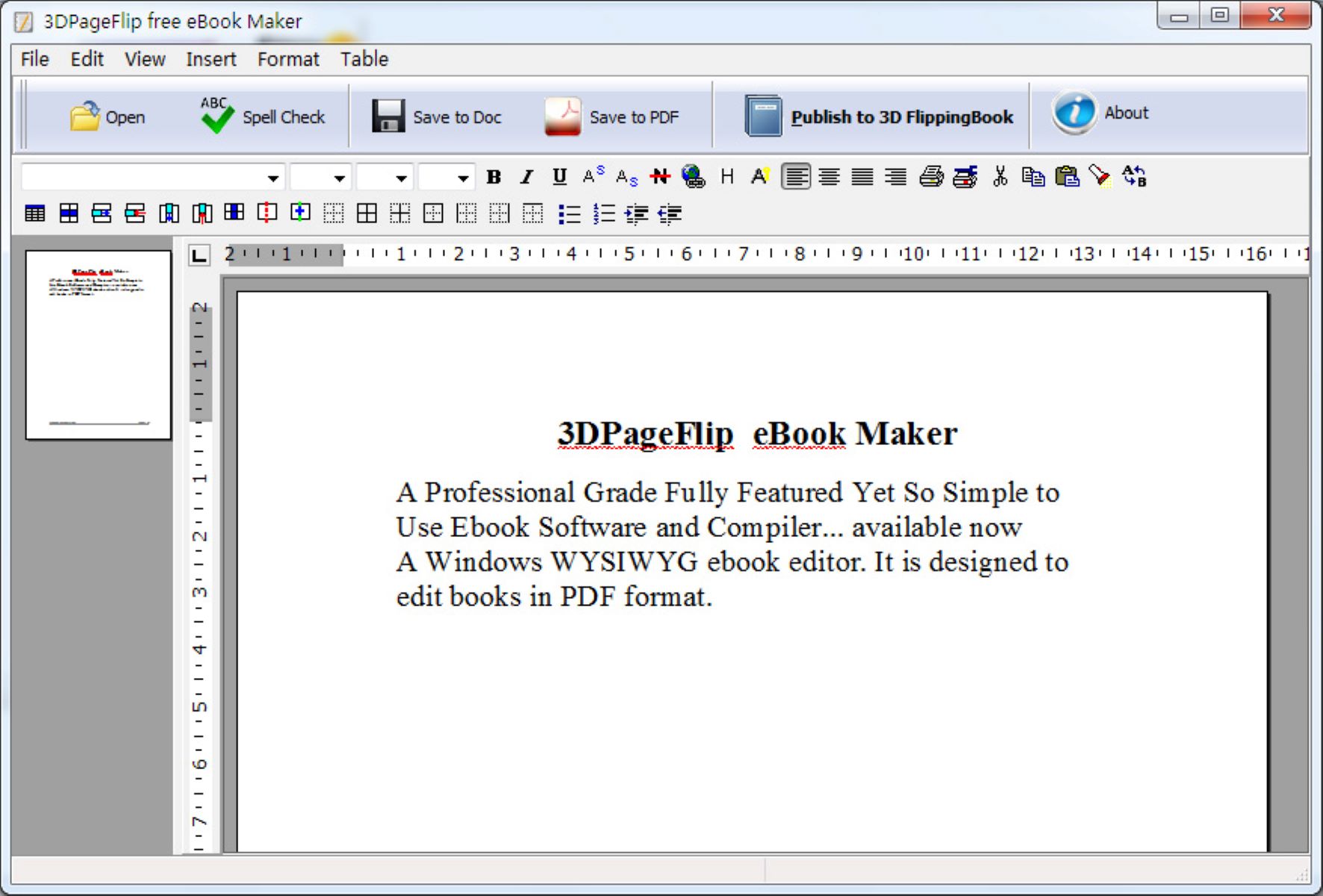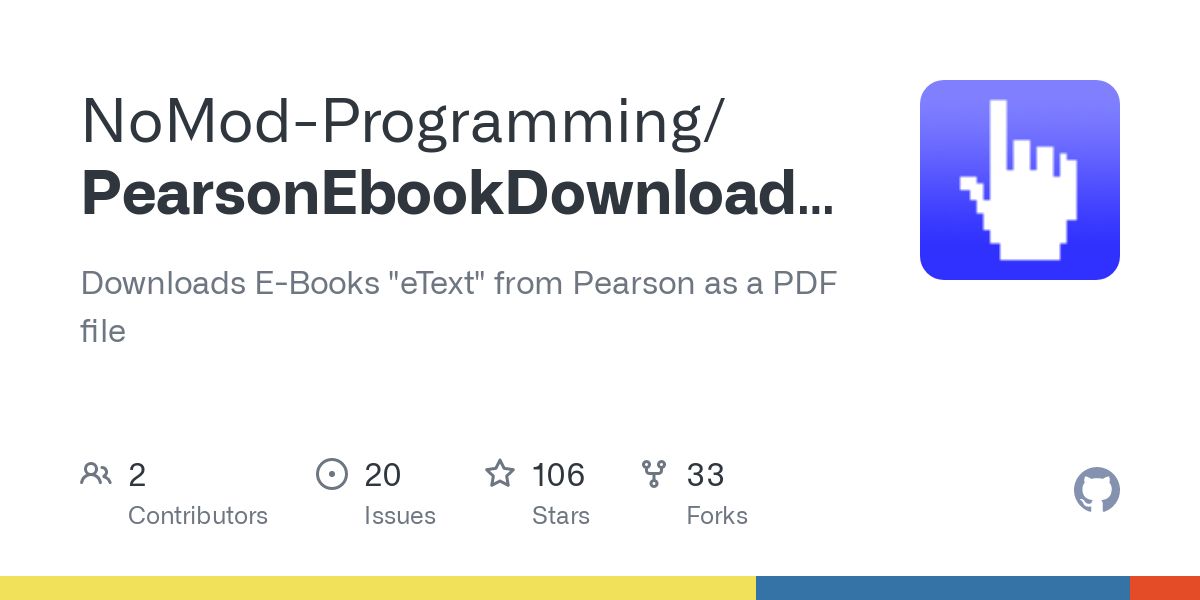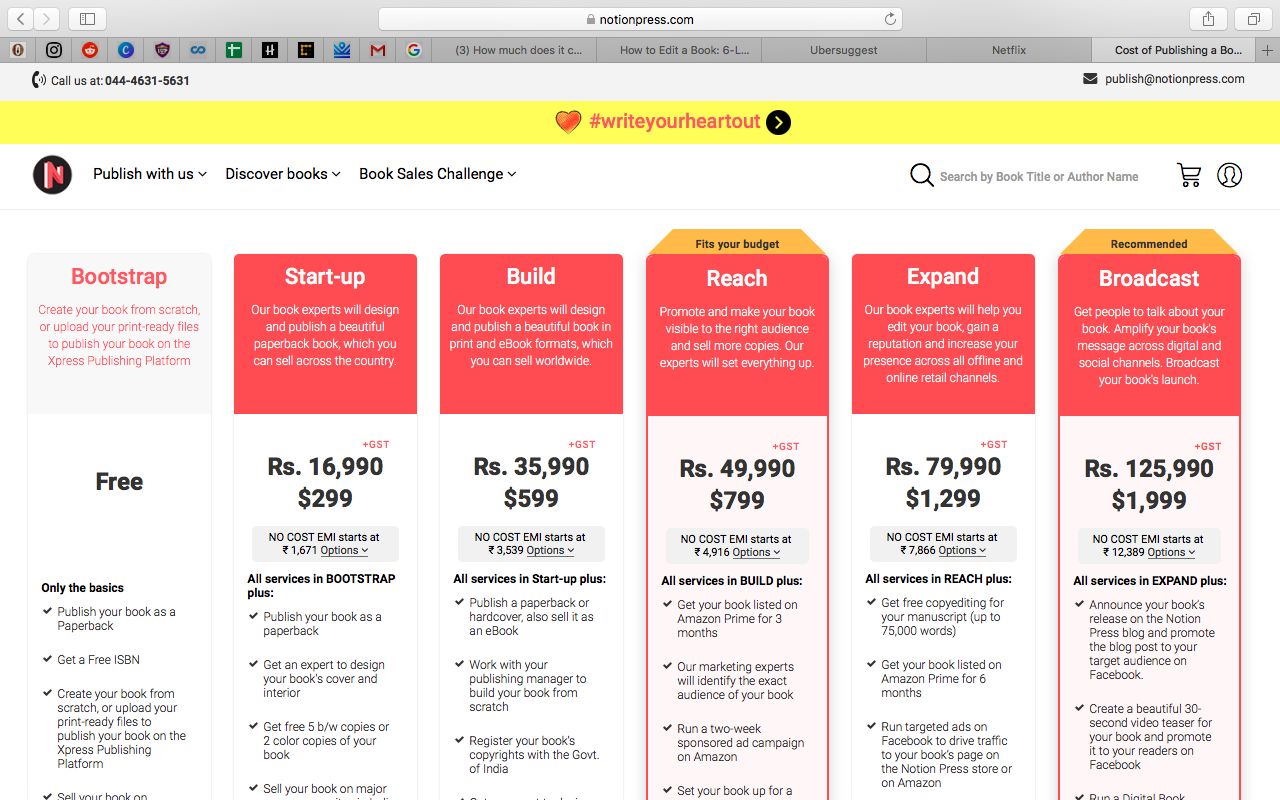Introduction
Welcome to the world of eBook editing! Editing plays a crucial role in ensuring the quality and impact of an eBook. Whether you are a seasoned author or a first-time writer, taking the time to edit your eBook thoroughly is essential to creating a polished and professional final product.
Editing goes beyond just catching spelling and grammar errors. It involves refining the content, improving clarity, and enhancing the overall reading experience. A well-edited eBook not only impresses readers but also increases the likelihood of positive reviews and recommendations.
Editing can seem like a daunting task, but this guide is here to help. We will explore various aspects of the editing process and provide tips to streamline your workflow. Whether you plan to hire a professional editor or take on the editing yourself, this article will equip you with the necessary knowledge and tools to make your eBook shine.
Throughout this guide, we will discuss different stages of the editing process, including reviewing the content and structure, checking for grammar and punctuation errors, improving readability, addressing inconsistencies, and finalizing the layout. We will also explore the option of hiring a professional editor versus self-editing and recommend some useful editing tools and software.
Additionally, we will examine the importance of obtaining feedback from beta readers. Their insights and suggestions can be invaluable in identifying areas for improvement and making your eBook even better.
By the end of this guide, you will have a clear understanding of the editing process and be armed with the strategies and techniques needed to edit your eBook effectively. So, let’s dive in and discover the secrets to creating a polished and captivating eBook!
Understanding the Importance of Editing
Editing is a crucial step in the eBook publishing process that should never be overlooked. It involves more than just catching typos and grammatical errors; it is about refining the content and enhancing its impact on readers. Let’s explore why editing is so important:
- Polished and Professional Look: A well-edited eBook demonstrates professionalism and attention to detail. It shows readers that you have invested time and effort in producing a high-quality product.
- Captivating Reading Experience: Editing improves the overall flow and readability of your eBook, ensuring that readers won’t get distracted by awkward sentences or confusing paragraphs. A smooth reading experience keeps readers engaged and invested in your content.
- Clarity and Coherence: Through editing, you can refine your ideas, clarify your message, and ensure that your content is easy to understand. This is especially important for non-fiction eBooks where conveying information accurately is key.
- Eliminating Errors: From spelling mistakes to punctuation errors, an edited eBook ensures that these distractions are minimized or eliminated altogether. Such errors can detract from the credibility and professionalism of your work.
- Consistency and Accuracy: Editing allows you to maintain consistency in your writing style, tone, and terminology throughout the eBook. It ensures that your ideas are expressed in a clear and concise manner, without any contradictions or inconsistencies.
- Enhancing Credibility: A poorly edited eBook can harm your reputation as an author. By thoroughly editing your work, you establish yourself as a professional who takes pride in delivering top-notch content.
- Positive Reader Experience: When readers come across a well-edited eBook, they are more likely to leave positive reviews and recommend it to others. Editing improves the overall reading experience, increasing the chances of gaining loyal readership.
Whether you plan to self-publish or seek traditional publishing options, having a well-edited eBook is crucial. It is an investment that pays off in the form of reader engagement, positive reviews, and ultimately, sales success. Editing ensures that your eBook makes a lasting impression and leaves readers wanting more.
Planning Your Editing Process
Before diving into the editing process, it’s essential to have a well-structured plan in place. Creating a clear roadmap will help you stay organized and efficient throughout your editing journey. Here are some steps to consider when planning your editing process:
- Take a Break: After completing the initial draft of your eBook, take some time away from it. This break allows you to approach the editing process with fresh eyes, enabling you to spot errors and areas for improvement more effectively.
- Define Your Editing Goals: Clearly define the goals you want to achieve through editing. Is it to enhance readability, tighten the plot, or improve the overall structure? Having a clear vision will guide your editing decisions and keep you focused.
- Create an Editing Schedule: Establish a realistic timeline for your editing process, considering factors like the length of your eBook, your availability, and other commitments. Breaking the editing tasks down into manageable chunks will help you stay on track.
- Start with the Big Picture: Begin your editing process by reviewing the overall content and structure of your eBook. Check if the chapters flow logically, the pacing is consistent, and the plot or arguments are coherent. Make any necessary adjustments to ensure a seamless reading experience.
- Focus on Sentences and Paragraphs: Once you’re satisfied with the structure, zoom in on the sentence and paragraph level. Look for clarity, conciseness, and flow. Identify any convoluted or awkward sentences and rephrase them for better readability.
- Check for Grammar and Punctuation: Use grammar and spell-checking tools to catch any obvious errors, but also rely on your own proofreading skills. Pay attention to punctuation, spelling errors, and grammar mistakes. Consider hiring a professional proofreader if needed.
- Enhance Readability: Assess your eBook’s readability by considering factors such as sentence length, paragraph breaks, and the use of subheadings. Ensure that the language and vocabulary align with your target audience and that the content is easily digestible.
- Eliminate Repetition and Fillers: Cut out unnecessary words, phrases, and paragraphs that don’t contribute to the overall message or story. Look for redundant information or excessive use of filler words that can hinder clarity and impact.
- Address Consistency: Check for consistency in terms of character traits, plot details, dates, and formatting. This applies to both fiction and non-fiction eBooks. Maintain a consistent voice and style throughout the eBook to create a seamless reading experience.
- Consider Formatting and Layout: Pay attention to the visual presentation of your eBook. Ensure proper formatting of headings, subheadings, and paragraphs. Consider the font style and size, line spacing, and use of bullet points or numbered lists to enhance readability and visual appeal.
By planning your editing process, you set yourself up for success. It allows you to approach the task systematically and ensures that no aspect of your eBook is overlooked. So, take the time to outline your editing plan and embark on the journey to transform your initial draft into a polished masterpiece!
Reviewing the Content and Structure
One of the most important steps in the editing process is reviewing the content and structure of your eBook. This stage focuses on ensuring that the overall narrative or message is cohesive, engaging, and effectively delivered to your readers. Let’s explore some key aspects to consider when reviewing the content and structure:
- Plot (for fiction) or Arguments (for non-fiction): Evaluate the strength of your storyline or the clarity and logic of your arguments. Check if the plot unfolds smoothly and if the arguments are well-supported and persuasive. Look for any plot holes, logical inconsistencies, or weak transitions that may need to be addressed.
- Chapter Organization: Assess the order and flow of your chapters. Ensure that they follow a logical sequence and contribute to the overall narrative or message. Check if each chapter serves a purpose and if there are any gaps or redundancies that need to be addressed.
- Character Development (for fiction): Evaluate the depth and consistency of your characters. Are they well-rounded and relatable? Do their actions, motivations, and reactions make sense? Look for opportunities to enhance character development and create compelling, believable personas.
- Content Relevance (for non-fiction): Review the relevance and accuracy of the information provided. Ensure that each section contributes to the main topic and supports your overall message. Remove any information that is repetitive, outdated, or irrelevant.
- Pacing and Tension: Consider the pacing of your eBook. Does it hold the reader’s interest throughout? Ensure that there is a balance between moments of tension and relaxation, keeping the reader engaged and eager to turn the pages.
- Transitions and Signposting: Check if your transitions between paragraphs, chapters, or sections are smooth and logical. Look for any abrupt shifts or missing signposts that could confuse the reader. Ensure that the eBook’s structure guides the reader through the content seamlessly.
- Length and Conciseness: Evaluate the length of your eBook. Is it too long or too short for the intended audience? Consider trimming any unnecessary or repetitive sections to maintain a concise and engaging read.
- Reader Engagement: Put yourself in the reader’s shoes and assess how engaging and captivating the content is. Look for opportunities to enhance emotional connections, create suspense, or provide value to the reader. Ensure that your content resonates with your target audience.
By reviewing your eBook’s content and structure, you can identify areas for improvement and make necessary adjustments to create a more compelling and coherent reading experience. Remember that this stage is about fine-tuning your eBook and ensuring that its core message or story is effectively communicated. So, take the time to review and refine, and watch your eBook transform into a captivating masterpiece!
Checking for Grammar and Punctuation Errors
One of the essential aspects of the editing process is checking for grammar and punctuation errors in your eBook. While these may seem like minor details, they can significantly impact the professionalism and readability of your writing. Here are some strategies to help you effectively catch and correct grammar and punctuation errors:
- Proofreading: Carefully read through your eBook, paying close attention to each sentence and paragraph. Look for spelling mistakes, incorrect verb forms, and other grammatical errors. Take your time and read aloud if necessary to catch any errors that might have been missed.
- Grammar and Spell-checking Tools: Utilize grammar and spell-checking tools to automate the process. These tools can quickly flag common errors and provide suggestions for corrections. However, be cautious as they may not catch all mistakes and can sometimes offer incorrect suggestions.
- Subject-Verb Agreement: Check that the subject and verb in each sentence agree in number and tense. Look out for cases where the subject and verb do not match, such as using a singular verb for a plural subject or vice versa.
- Punctuation Accuracy: Review your eBook for correct comma usage, periods, apostrophes, quotation marks, colons, and semicolons. Ensure that each punctuation mark is used appropriately and consistently throughout your writing.
- Capitalization: Verify that proper nouns, titles, and the beginning of sentences are capitalized correctly. Pay attention to consistency and ensure that the same capitalization style is maintained throughout the eBook.
- Homonyms and Homophones: Be cautious with words that sound similar but have different spellings and meanings. Common examples include “their” and “there,” “your” and “you’re,” or “its” and “it’s.” Double-check that you are using the correct homonym or homophone in each instance.
- Avoiding Run-On Sentences and Fragments: Check for run-on sentences and sentence fragments. Ensure that each sentence is complete, with a subject, verb, and a clear meaning. Break up long sentences or combine short ones to improve readability.
- Consistent Verb Tenses: Maintain consistency in your verb tenses throughout the eBook. Avoid unnecessary changes between past, present, and future tenses, unless there is a deliberate reason for the shift.
- Proofread Multiple Times: Go through your eBook multiple times to increase the chances of catching all grammar and punctuation errors. Take breaks between proofreading sessions to freshen your perspective and minimize the risk of overlooking mistakes.
Checking for grammar and punctuation errors not only enhances the readability of your eBook but also demonstrates your commitment to delivering a professional product. Remember, readers can be distracted and deterred by frequent grammar and punctuation mistakes. So, invest the time and effort to thoroughly review and correct these errors, ensuring that your eBook shines with grammatical precision!
Improving Clarity and Readability
Ensuring clarity and readability is crucial in creating an eBook that captivates and engages readers. Even the most compelling content can fall flat if it is not communicated effectively. Here are some tips to improve clarity and readability in your eBook:
- Simplify Complex Concepts: If your eBook covers complex subjects, break them down into understandable, bite-sized pieces. Use clear explanations, examples, and analogies to help readers grasp the information easily.
- Avoid Jargon and Technical Terms: While some jargon may be necessary, try to use plain language that your audience can understand. Define terms when first introduced or provide a glossary for quick reference.
- Use Short Sentences and Paragraphs: Chunk your content into shorter sentences and paragraphs to improve readability. This allows readers to digest information more easily and helps prevent their attention from wandering.
- Subheadings and Bulleted Lists: Use subheadings to break up text and guide readers through your eBook. Utilize bulleted or numbered lists to present information concisely and enhance readability.
- Conversational Tone: Adopt a conversational tone to create a friendly and approachable connection with your readers. Write as if you are having a conversation with them, using clear and concise language.
- Active Voice: Use the active voice to make your sentences more direct and engaging. This helps eliminate ambiguity and makes your writing more impactful.
- Avoid Repetition: Check for repetitive sentences, phrases, or information that may confuse or bore readers. Trim unnecessary repetition to maintain a concise and engaging flow.
- Visual Aids: Incorporate visual aids such as diagrams, charts, or illustrations to support your content. Visuals can enhance understanding, break up text, and make the eBook more visually appealing.
- Consistent Tone and Style: Ensure a consistent tone and style throughout your eBook. This helps maintain coherence and improves the overall reading experience. Decide on the desired tone and style upfront and stick to it.
- Read Aloud: Read your eBook aloud to identify sentences or sections that sound awkward or confusing. This technique helps you catch any issues with flow, sentence structure, or clarity.
- Seek Feedback: Get feedback from beta readers or trusted individuals who can provide insights on areas that need improvement. Their fresh perspective and suggestions can greatly contribute to enhancing clarity and readability.
By implementing these techniques, you can significantly improve the clarity and readability of your eBook. Remember, readers appreciate content that is easy to understand and digest. So, take the time to refine your writing, ensuring that your ideas shine through with clarity and simplicity!
Enhancing the Flow and Coherence
The flow and coherence of your eBook are essential for creating a seamless reading experience. When your eBook has a strong flow, readers can easily follow your ideas and remain engaged from start to finish. To enhance the flow and coherence of your eBook, consider the following strategies:
- Create Clear Transitions: Ensure that your eBook flows smoothly from one paragraph or chapter to the next. Use transitional phrases or sentences to connect ideas and guide readers through your content.
- Logical Organization: Structure your eBook in a logical order. Present information in a sequence that makes sense, whether it’s a chronological narrative or a step-by-step process. Avoid abrupt jumps or tangents that can confuse readers.
- Consistent Point of View: If you’re writing fiction, maintain consistency in your point of view. Choose either first person, third person limited, or third person omniscient and stick to it throughout the eBook. In non-fiction eBooks, maintain a consistent perspective and maintain a clear authorial voice.
- Conduct Smooth Transitions: Transition between paragraphs and sections without jarring the reader. Use transition words or phrases like “however,” “in addition,” or “on the other hand” to create logical connections between thoughts and ideas.
- Refine Sentence Structure: Ensure that sentences flow well and are easy to understand. Use a mix of sentence lengths and structures to add rhythm and variety. Varying sentence structure can help maintain reader interest and avoid monotony.
- Eliminate Redundancy: Check for unnecessary repetition of information or ideas. Remove duplicate thoughts or examples that do not add value. Streamline your writing to keep it concise and focused on the core message.
- Storyline or Argument Continuity: Maintain continuity in your storyline or argument. Consider how each section connects to the previous one and advances the overall narrative or thesis. Look for gaps or inconsistencies that need to be addressed.
- Smooth Dialogue Tags: If writing fiction or including dialogues in non-fiction, use dialogue tags effectively. Ensure that they are integrated seamlessly into the flow of the conversation and provide clarity without being obtrusive.
- Balance Pace and Description: Find the right balance between action and description. Avoid excessive detail that slows down the pace or overwhelms the reader. Provide enough description to create a vivid mental image without overshadowing the plot or argument.
- Readability at Different Levels: Assess the readability of your eBook for readers of different skill levels. Simplify complex concepts, define technical terms, and provide explanations when needed. Make sure your eBook is accessible and engaging to a broad audience.
By enhancing the flow and coherence of your eBook, you ensure that readers can follow your ideas smoothly and stay engaged throughout their reading journey. Keep in mind that a seamless flow enhances readability and makes your eBook more enjoyable. So, take the time to refine the transitions, improve the sentence structure, and maintain overall coherence, and watch your eBook come alive with a captivating flow!
Removing Unnecessary Fluff and Repetition
When editing your eBook, it is important to eliminate unnecessary fluff and repetition. Streamlining your writing not only improves readability but also ensures that your message or story remains focused and impactful. Here are some tips to help you identify and remove unnecessary fluff and repetition:
- Trim Excessive Descriptions: Review your eBook for excessive descriptions that do not contribute to the plot or the reader’s understanding of the content. Remove any unnecessary details that can weigh down the pacing and distract readers.
- Avoid Overexplaining: Trust your readers’ intelligence and avoid overexplaining concepts or ideas. Provide enough information to ensure understanding, but refrain from providing unnecessary clarification or repeating information that is already clear.
- Eliminate Filler Words and Phrases: Scan your writing for filler words or phrases that don’t add value to your sentences. Examples include “very,” “really,” “actually,” or “in order to.” Removing these unnecessary fillers tightens your prose and improves clarity.
- Minimize Redundant Information: Be mindful of repeating the same information multiple times. While some reinforcement may be necessary, excessive repetition can bore readers. Ensure each instance of information serves a purpose and contributes to the overall message.
- Combine Repetitive Sentences or Ideas: Look for sentences or ideas that convey the same message or provide redundant information. Combine them into a single sentence or paragraph to eliminate repetition and maintain a cohesive flow.
- Remove Unrelated Tangents: Stay focused on the main topic or storyline and avoid going on unrelated tangents. While some diversions may be interesting, they can detract from the overall coherence and distract readers from the main point of your eBook.
- Condense Lengthy Explanations: Review lengthy explanations and consider if they can be condensed or expressed more succinctly. Aim for clear and concise explanations that convey the necessary information without unnecessary verbosity.
- Avoid Repeating Dialogue: When writing dialogue, avoid repetitive statements or exchanges that lack substance or progression. Ensure that each line of dialogue contributes to character development, plot advancement, or the overall theme.
- Stay Concise with Examples and Illustrations: While examples and illustrations can enhance understanding, be mindful of their length and relevance. Keep examples concise and choose illustrations that directly support your content without being superfluous.
- Utilize Skillful Editing: Use editing techniques like line editing or developmental editing to identify and eliminate unnecessary fluff or repetition. These techniques help to streamline your writing and ensure precision in conveying your intended message.
By removing unnecessary fluff and repetition, you create a lean and focused eBook that captivates readers and keeps them engaged. Remember, concise writing is often more impactful and leaves a lasting impression. So, take the time to carefully review your eBook and eliminate any fluff or repetition that may detract from the strength of your message or story!
Addressing Inconsistencies and Plot Holes
When editing your eBook, it is crucial to address any inconsistencies and plot holes that may exist in your narrative or argument. Inconsistencies can confuse readers and diminish the overall quality of your eBook, while plot holes can undermine the believability and coherence of your story. Here are some strategies to help you identify and address inconsistencies and plot holes effectively:
- Review the Entire eBook: Read through your eBook from start to finish, paying close attention to details, character traits, and plot points. Look out for any inconsistencies in the narrative or inconsistencies in the development of characters or arguments.
- Create a Story or Argument Timeline: Create a visual timeline or outline of your story or argument. This can help you spot any gaps, contradictions, or missing events that need to be addressed.
- Character Profiles and Story Bible: Keep detailed character profiles and a story bible to maintain consistency throughout your eBook. These resources can help you keep track of character traits, appearances, and story details, ensuring that they remain consistent throughout the eBook.
- Ensure Cause and Effect Relationships: Examine the cause and effect relationships of events in your eBook. Ensure that the actions and consequences align logically and that there are no unexplained or inconsistent occurrences.
- Test Plausibility and Realism: Evaluate the plausibility and realism of your eBook. Check for any plot elements or events that stretch the limits of believability. If writing fiction, the story should remain within the established rules and logic of the world you have created.
- Seek External Feedback: Share your eBook with trusted beta readers or critique partners who can provide fresh perspectives. Their feedback can help you identify inconsistencies or plot holes that you may have overlooked.
- Edit for Continuity: Edit your eBook with a focus on maintaining continuity. Verify that earlier events or information are consistent with later developments. Ensure that the transitions between chapters or sections are smooth and coherent.
- Address Reader Questions: Consider potential questions that readers might have as they read your eBook. Anticipate any confusion or doubts and address them within the text to provide clarity and resolve any inconsistencies.
- Make Necessary Revisions: Once you have identified inconsistencies or plot holes, make the necessary revisions. This may involve rewriting certain sections, strengthening character motivations, or adjusting the sequence of events to ensure a seamless and coherent narrative or argument.
By addressing inconsistencies and plot holes, you enhance the overall quality and integrity of your eBook. Readers appreciate a well-crafted and cohesive story or argument. So, take the time to review and revise your eBook, ensuring that any inconsistencies or plot holes are meticulously addressed, allowing your eBook to shine with coherence and believability.
Formatting and Layout Considerations
When editing your eBook, it is important to pay attention to formatting and layout considerations. How your eBook is presented visually can greatly impact the reading experience and the overall perception of professionalism. Here are some key aspects to consider when it comes to formatting and layout:
- Consistent Font and Size: Choose a clear and legible font for your eBook, and ensure that the font size is comfortable for reading. Consistency in font and size throughout the eBook creates a cohesive and visually pleasing experience.
- Proper Paragraph Formatting: Format paragraphs consistently by using indents or line spacing to clearly differentiate between paragraphs. This makes it easier for readers to follow the flow of your content and enhances readability.
- Heading and Subheading Hierarchy: Use a logical hierarchy for headings and subheadings. This allows readers to easily navigate your eBook and understand the organization of your content at a glance.
- Appropriate Use of Bold and Italics: Use bold and italics sparingly to emphasize key points or titles. Overuse of these formatting styles can be distracting and interfere with the overall reading experience.
- Effective Use of Lists: Utilize bullet points or numbered lists to present information in a clear and concise manner. Lists help break up the text and make information more digestible for readers.
- Consideration for Images and Graphics: If your eBook includes images or graphics, ensure they are high-quality and relevant to the content. Place them strategically to enhance understanding or engagement, but avoid overcrowding or overwhelming the eBook with excessive visuals.
- Attention to Margins and Page Layout: Adjust margins and page layout to create an aesthetically pleasing and balanced visual presentation. White space plays an important role in readability and allows readers’ eyes to rest between blocks of text.
- Consistent Use of Headers and Footers: Include consistent header and footer information throughout your eBook, such as page numbers, chapter titles, or author name. This helps readers navigate the eBook and adds a professional touch.
- Incorporation of Hyperlinks and References (if applicable): If your eBook contains hyperlinks or references, ensure they are correctly formatted and functional. Make the links distinguishable from regular text, and test them to ensure they lead to the intended destinations.
- Accessibility Considerations: Keep accessibility in mind by ensuring your eBook is compatible with different devices and screen sizes. Consider using scalable fonts and providing alternative text for images to make your eBook accessible to a wider audience.
By giving careful consideration to formatting and layout, you enhance the overall visual appeal and readability of your eBook. A well-structured and aesthetically pleasing eBook not only provides a better reader experience but also adds a professional touch to your work. So, take the time to format and layout your eBook thoughtfully, allowing your content to shine in a visually appealing package!
Hiring a Professional Editor or Self-Editing
When it comes to editing your eBook, you have two options: hiring a professional editor or taking on the editing process yourself. Both approaches have their pros and cons. Consider the following factors when deciding whether to hire a professional editor or opt for self-editing:
- Expertise and Objectivity: Professional editors bring expertise and objectivity to the editing process. They have a trained eye for grammar, structure, and style, and can offer valuable insights and suggestions to enhance your eBook.
- Save Time and Effort: Hiring a professional editor frees up your time and energy, allowing you to focus on other aspects of writing or publishing. They take care of the intricate details, ensuring a polished final product.
- Fresh Perspective: Professional editors offer a fresh perspective on your eBook. They approach it as readers, providing feedback on how your content is perceived and suggesting improvements that you may not have considered.
- Quality Assurance: Professional editors ensure that your eBook meets industry standards in terms of grammar, punctuation, structure, and overall quality. Their expertise helps elevate your work, increasing its chances of success.
- Cost Considerations: Hiring a professional editor is an investment in your eBook’s quality, but it comes at a cost. Consider your budget and the potential return on investment when deciding whether to hire an editor.
- Self-Editing Control: Opting for self-editing gives you full control over the editing process. You can make immediate revisions, experiment with different ideas, and maintain complete creative control over your eBook.
- Development of Editing Skills: Self-editing allows you to develop your editing skills and become more proficient in the craft. This can be a valuable skill set to have as a writer and can benefit future projects.
- Cost Savings: Self-editing eliminates the expense of hiring a professional editor. If budget is a concern, self-editing can be a viable option, especially if you are comfortable with the editing process.
- Thoroughness and Feedback: Self-editing requires discipline and attention to detail. You need to be thorough in reviewing your eBook for errors, inconsistencies, and other editing considerations. Seeking feedback from beta readers or critique partners can help fill the gaps in your self-editing process.
- Combination Approach: You can also consider a combination approach, where you self-edit initially and then hire a professional editor for a final review. This approach can provide a balance between cost savings and ensuring professional quality.
Ultimately, the decision to hire a professional editor or self-edit depends on your resources, budget, and personal preference. Consider the importance of quality editing in creating a polished eBook, and weigh the benefits and drawbacks of each option. Reflect on your editing skills, time availability, and the level of professional polish you aim to achieve. Whichever option you choose, remember that the editing process is critical to delivering a high-quality eBook to your readers!
Using Editing Tools and Software
Editing tools and software can be valuable assets in the editing process, assisting in catching errors, improving readability, and enhancing the overall quality of your eBook. Here are some editing tools and software options that you can consider using:
- Grammar and Spell-Checking Tools: Tools like Grammarly, ProWritingAid, and Hemingway Editor can help you catch grammar and spelling errors, offer suggestions for improvements, and provide insights on writing style and readability.
- Style Guides and Manuals: Refer to reputable style guides like The Chicago Manual of Style or The Associated Press Stylebook. These resources provide guidelines on grammar, punctuation, and formatting to ensure consistency and adherence to industry standards.
- Thesaurus and Dictionaries: Utilize online thesauri or dictionaries to find synonyms, antonyms, and definitions. These resources can help you diversify your vocabulary and choose the most appropriate words for your eBook.
- Writing Enhancement Software: Programs like ProWritingAid, AutoCrit, or StyleWriter offer in-depth writing analysis, identifying areas for improvement in terms of style, clarity, clichés, sentence structure, and more.
- Plagiarism Checkers: Plagiarism checkers like Turnitin or Grammarly’s plagiarism checker can help ensure your work is original and free from unintentional plagiarism by cross-referencing your content against a vast database of sources.
- Editing Apps: Several editing apps, such as Evernote or Scrivener, offer features like organization tools, collaboration options, and note-taking capabilities, facilitating the editing process and helping you stay organized.
- Voice-to-Text Software: If you prefer dictating your writing, voice-to-text software like Dragon Dictate or Google Docs’ voice typing feature can convert spoken words into written text, aiding in the writing and editing process.
- Citation Management Tools: When dealing with academic or research eBooks, citation management tools like Zotero, EndNote, or Mendeley can help you organize your references and create properly formatted citations and bibliographies.
- Readability Analyzers: Readability analyzers, such as the Flesch-Kincaid Grade Level or the Gunning Fog Index, provide insights into the readability of your content and offer suggestions for simplifying complex sentences or adjusting vocabulary to target specific audiences.
- Collaboration Software: Collaboration platforms like Google Docs or Microsoft Word’s track changes feature enable seamless collaboration with editors, beta readers, or co-writers, facilitating the editing process and incorporating feedback efficiently.
These editing tools and software options can be valuable resources in refining your eBook. However, remember that while these tools can be helpful, they are not infallible. Use them as aids but rely on your own judgment and editing skills as well. Ultimately, the human touch and critical eye are crucial components of the editing process.
Select the tools and software that align best with your preferences and needs. Experiment with different options to find the ones that suit your editing style and provide the most benefit for your eBook. Remember, the goal is to enhance your editing process and produce a polished and professional eBook for your readers!
Getting Feedback from Beta Readers
Seeking feedback from beta readers can be an invaluable step in the editing process, offering fresh perspectives and insights to improve your eBook. Beta readers are individuals who read your eBook before publication and provide feedback on various aspects such as plot, characters, pacing, and overall engagement. Here’s why getting feedback from beta readers is essential:
- New Perspectives: Beta readers bring a fresh set of eyes to your eBook. They can offer unique perspectives and provide insights you may have overlooked as the author. Their feedback helps you understand how your eBook is perceived by potential readers.
- Identifying Strengths and Weaknesses: Feedback from beta readers helps you identify both the strengths and weaknesses of your eBook. You will learn what aspects resonate with readers and what parts may need further development or clarification.
- Pacing and Engagement: Beta readers can provide valuable input on the pacing of your eBook. They can help identify sections that may be too slow or parts where the reader’s engagement dips. This feedback helps you fine-tune the pacing to maintain reader interest.
- Character Development: Feedback from beta readers can shed light on how well-developed your characters are and whether they resonate with readers. They can pinpoint areas where characters may need further depth or where inconsistencies exist.
- Plot and Storyline: Beta readers can offer feedback on the cohesiveness and logic of your plotline. They can help identify plot holes, inconsistencies, or areas where clarity may be lacking, allowing you to refine and strengthen the overall story.
- Reader Experience: Beta readers can provide insights on their overall experience while reading your eBook. Their feedback regarding emotional connection, immersion, or specific scenes can help you gauge the impact your eBook has on readers.
- Evaluating Readability: Beta readers can offer feedback on the readability of your eBook, including the language, style, and overall clarity. Their input helps you identify areas where language may need simplification, sentences can be tightened, or confusing passages can be clarified.
- Polishing your eBook: Feedback from beta readers helps you make necessary revisions and polish your eBook to a higher standard. It allows you to address any weaknesses or areas for improvement before finalizing your work.
- Testing Target Audience Reaction: Beta readers are a representation of your target audience. Their feedback provides valuable insights into how well your eBook meets the expectations and preferences of your intended readership.
- Appreciation and Word-of-Mouth: Involving beta readers creates a sense of inclusion and appreciation for their input. This can lead to positive word-of-mouth promotion and a dedicated group of early readers who eagerly await your future works.
When selecting beta readers, consider individuals who match your target audience or have relevant expertise in your eBook’s genre or subject matter. Provide clear guidelines for feedback and encourage honest and constructive criticism. Remember, beta reader feedback is an essential tool for enhancing your eBook and ensuring it resonates with readers.
Take the time to carefully consider the feedback provided by beta readers and make revisions accordingly. Their input, combined with your own editing expertise, will help you create a stronger, more engaging eBook for your readers!
Finalizing Your Edited eBook
Once you have completed the editing process, it’s time to finalize your eBook before publication. This stage focuses on reviewing the edited version, making any necessary revisions, and preparing your eBook for its official release. Here are some key steps to consider when finalizing your edited eBook:
- Review Edits and Suggestions: Carefully review the edits and suggestions made by your editor or beta readers. Consider their feedback and make revisions to improve and strengthen your eBook.
- Proofread Once More: Conduct a final proofreading of your eBook to catch any remaining grammar, spelling, or punctuation errors. Read every word carefully, and consider reading aloud or using text-to-speech software to help identify any remaining issues.
- Address Formatting and Layout: Ensure that the formatting and layout of your eBook are consistent and visually appealing. Check that headings, subheadings, paragraphs, and other elements are properly formatted and adhere to the design standards you have set for your eBook.
- Double-Check Hyperlinks and References: If your eBook contains hyperlinks or references, verify that they are correct and functional. Ensure that the links lead to the intended sources or locations and that the citation format is accurate.
- Format eBook for Different Platforms: Prepare your eBook for publishing on various platforms by converting it into the appropriate file formats (e.g., ePub, MOBI). Test the eBook on different devices and ensure that it displays correctly.
- Consider Beta Feedback: Evaluate the feedback you received from beta readers and determine if any further revisions or adjustments are necessary based on their valuable insights. Address any recurring suggestions or concerns to improve the overall quality of your eBook.
- Seek a Fresh Set of Eyes: Consider having a new set of eyes review your finalized eBook. This could be a professional proofreader or someone unfamiliar with your work. Their perspective can help catch any last-minute errors or provide additional suggestions for improvement.
- Create a Table of Contents: Ensure that your eBook has a well-structured and functional table of contents. Verify that chapter titles and page numbers are accurate and that the table of contents links to the corresponding sections within the eBook.
- Obtain Copyright or ISBN: If applicable, secure the necessary copyright or ISBN (International Standard Book Number) for your eBook. This will help protect your work and make it easier to distribute and sell.
- Consider Branding and Cover Design: Pay attention to your eBook’s branding and cover design. Ensure that they align with your target audience’s expectations and convey the essence of your eBook effectively.
- Create Metadata and Keywords: Generate relevant metadata and keywords for your eBook. These will help optimize your eBook for search engines and make it easier for readers to discover it.
- Perform a Final Quality Check: Before releasing your eBook, perform a final quality check. Proofread, review, and test all elements once more to ensure a polished and error-free final product.
By following these steps, you can finalize your edited eBook with confidence, knowing that you have thoroughly reviewed, revised, and prepared it for publication. Remember, attention to detail and a commitment to producing a high-quality eBook will contribute to its success. So, take the time to finalize every aspect and prepare to share your work with readers!
Conclusion
Congratulations on completing the editing process for your eBook! Editing is a crucial step in ensuring your eBook shines with professionalism, engages readers, and delivers a seamless reading experience. By following the various stages of editing, including reviewing the content, addressing grammar and punctuation errors, enhancing clarity and readability, and making necessary revisions, you have taken significant strides towards creating a polished final product.
Remember that editing is an iterative process, and it requires dedication, attention to detail, and the willingness to receive and incorporate feedback. Whether you choose to hire a professional editor or self-edit, the aim is to refine your eBook, enhance its impact, and deliver a high-quality reading experience.
Utilizing editing tools, seeking feedback from beta readers, and conducting rigorous proofreading are essential steps towards improving your eBook. Take the time to fine-tune your eBook’s flow, address inconsistencies, eliminate unnecessary fluff and repetition, and ensure proper formatting and layout.
As you finalize your eBook, pay attention to the finer details and perform a final quality check to catch any lingering errors or issues. Remember, every improvement you make contributes to a more engaging and enjoyable reading experience for your audience.
Editing is a labor of love, and it is essential in transforming your initial draft into a professional and captivating eBook. Embrace the process, appreciate the feedback and suggestions you receive, and take pride in your dedication to delivering a high-quality eBook to your readers.
Now, armed with this knowledge and with your edited eBook in hand, you are ready to embark on the journey of publishing and sharing your words with the world. Best of luck on your publishing journey, and may your eBook captivate and resonate with readers everywhere!

























